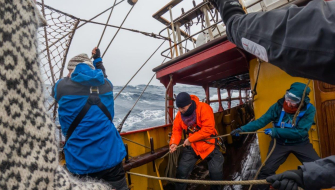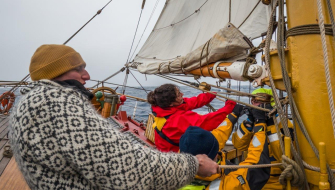Retracing our steps once more.
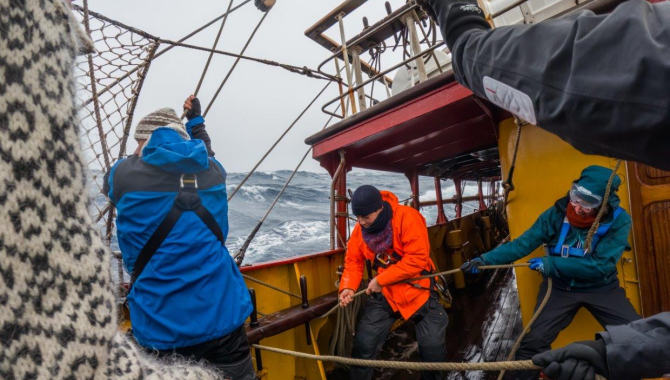
A cold night that froze the rig. A windy night, with gusts of 40kn over growing and growing seas. Shrouds, stays, and ropes are caked with ice, the canvas is stiff frozen, some of the blocks where downhauls and buntlines run are stuck, iced up. All making for dousing sail and running aloft to furl it a good stunt during the first dark hours of the day.
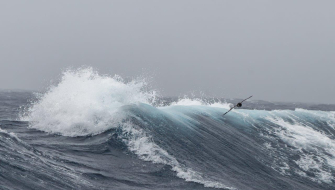
She jerks, pitches, and falls to a heavy heel on the rough seas, her braces tight on close-hauled, just the topsails, lower staysails, inner jib, and spanker remain set. The seas are high and crossed. Her course is to the north-northwest, high into the strong winds and raging gusts.
The situation didn’t change much until the afternoon, when it is decided to turn her around again, to head south once more.
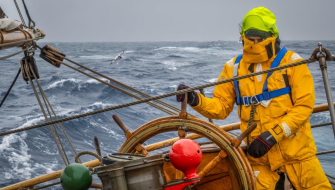
The watch is split between masts, people ready on braces, downhauls of lower staysails, and ready too for taking away the spanker and changing the tack of the headsails. A manoeuvre which we all start knowing pretty well begins — we are wearing ship, turning around with the wind and getting her on a new course. Hands are on the ropes. Pulling commands are given when the wind gusts again over the 40kn. Well, with water coming over the bulwarks, heeling and rolling, the manoeuvre continues. Soon the Europa is basically retracing the same route she did earlier on when she was on a northerly heading. The strong westerlies plus the high seas don’t want to abate, and she can’t fight against them to set course towards the north of the Antarctic Peninsula.
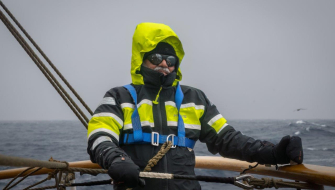
Forecasted for tomorrow are lighter conditions and the wind veering to northwesterly. If it happens, that would be a chance to make way towards our destination, even though she will need her engines too to steer in that way. But for today, on the wheel a course that doesn’t make many friends amongst the ship’s complement, as once more we don’t seem to eat away any mileage towards Antarctica. Besides this, a look at the bridge route on the GPS in the evening shows ourselves crossing our same path we sailed earlier on before wearing ship.
Rough seas, powerful winds, boisterous conditions that make for an uncomfortable ride. But out there at sea, albatrosses (including three species: light-mantled, black-browed, and grey-headed), Cape petrel flocks, southern fulmars, giant petrels, and clouds of prions really seem to enjoy this shape of things. Where we bump against waves, shake, and lurch, they elegantly soar over the white horses of the breaking swells.
